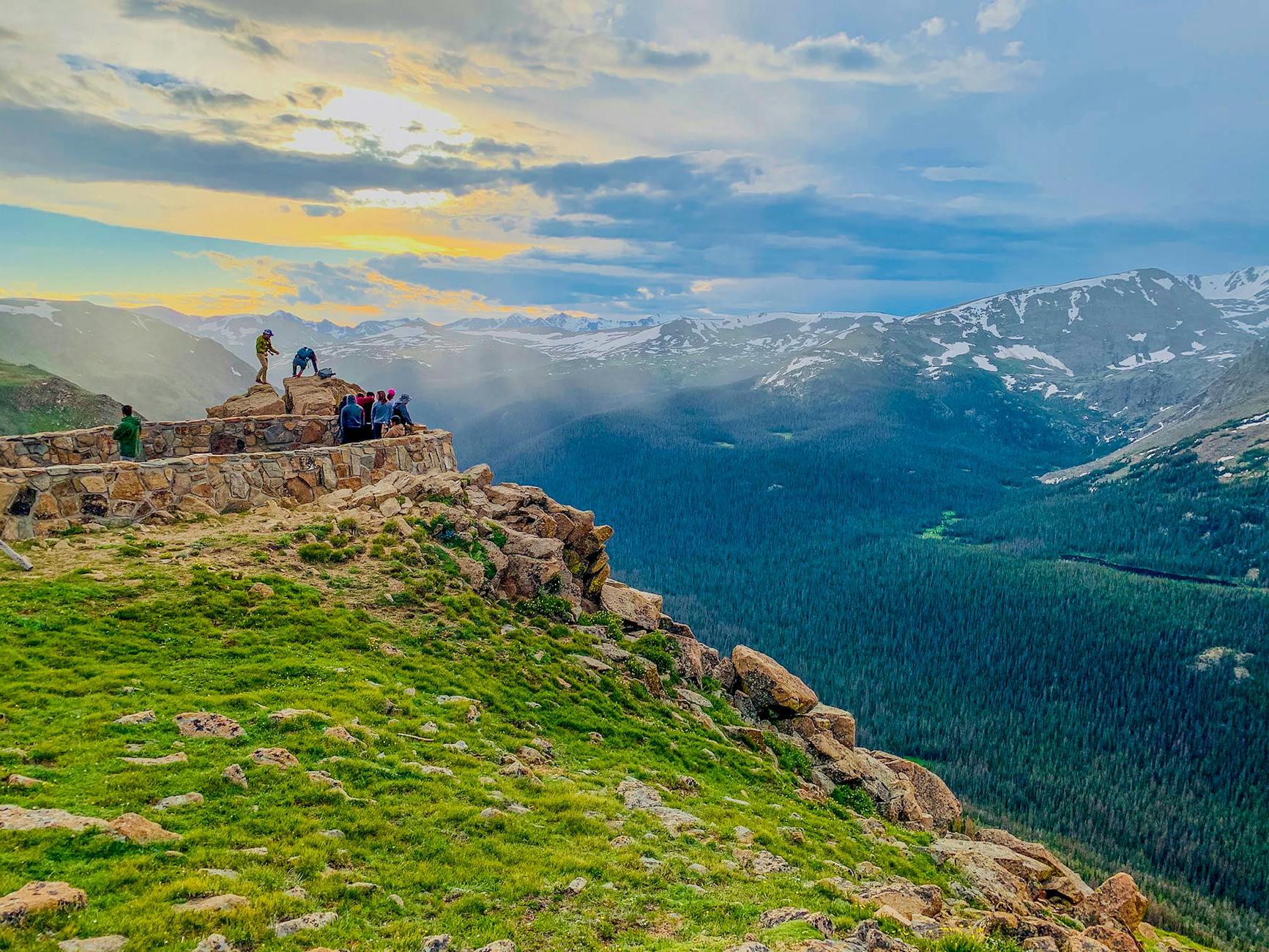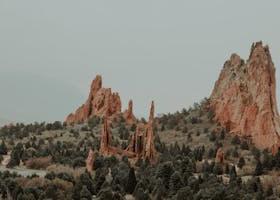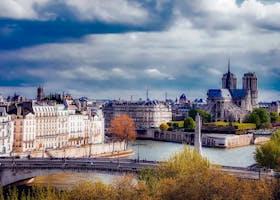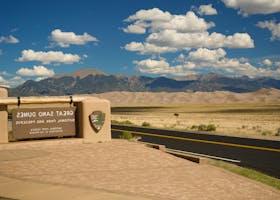Top 10 Must-See Spots in Rocky Mountain National Park, Colorado
Posted on June 4, 2024 • 10 minutes • 2002 words
Table of contents
- 10 best things to see in Rocky Mountain National Park
-
Frequently Asked Questions
- 1. What is the best time of the year to visit Rocky Mountain National Park?
- 2. Should I rent a car in Rocky Mountain National Park?
- 3. What are different ways to get to Rocky Mountain National Park?
- 4. Are there things to do with children in Rocky Mountain National Park?
- 5. Is Rocky Mountain National Park safe to travel to?
Rocky Mountain National Park in Colorado is a breathtaking wonderland that everyone should experience at least once. With towering mountains, serene lakes, and lush forests, it’s no wonder this park draws millions of visitors each year. Summer and fall are the most popular times to visit, thanks to the warm weather and stunning foliage, but don’t let that stop you from exploring its beauty year-round. Whether you’re into hiking, wildlife watching, or simply soaking in the views, there’s always something magical waiting for you. Let’s dive into the top 10 must-see spots in this incredible national park!
10 best things to see in Rocky Mountain National Park
10. Holzwarth Historic Site
When you visit Rocky Mountain National Park, make sure to stop by the Holzwarth Historic Site. This fascinating landmark gives you a glimpse into the early 1900s when it was a rustic guest ranch. As you walk through the historic cabins and the scenic meadow, you’ll feel like you’ve stepped back in time. To get there, head to the west side of the park and look for signs pointing to the Kawuneeche Valley. The site is about a mile hike from the parking area, but it’s an easy and enjoyable walk with plenty of wildlife to see. Pay attention to the interpretive signs along the trail; they provide interesting details about the history of the area and the people who lived there. Also, be on the lookout for elk and moose, as they are often seen grazing nearby.
9. Sprague Lake
Visiting Sprague Lake at Rocky Mountain National Park is a must-do! This beautiful spot offers stunning mountain views, easy trails, and a peaceful setting perfect for relaxation or a quick stroll. To get there, enter the park from the east at the Estes Park entrance, then follow Bear Lake Road for about 6 miles until you see the signs for Sprague Lake. There’s a parking area right by the lake, so access is easy. Make sure to bring your camera for fantastic photo opportunities, especially at sunrise or sunset. Also, watch out for wildlife like moose and ducks, and be respectful of their space. Remember to pack out any trash to keep this incredible place pristine! Enjoy your visit!
8. Alberta Falls
When visiting Rocky Mountain National Park, make sure to stop by Alberta Falls for a truly captivating experience. This picturesque waterfall cascades down 30 feet, offering stunning views and a great spot for photos. To get there, start at the Glacier Gorge Trailhead, which is located along Bear Lake Road. It’s a relatively easy 0.8-mile hike one way, making it accessible for most visitors. Along the route, you’ll walk through beautiful forests and catch occasional glimpses of jagged peaks. Keep an eye out for uneven ground and remember to bring water and wear sturdy footwear. The best time to visit is early in the morning to avoid crowds, especially during the peak summer months. Enjoy the natural beauty and tranquility that makes Alberta Falls a must-see destination in the park!
7. Bear Lake
When visiting Rocky Mountain National Park, make sure to stop by Bear Lake, a charming alpine lake that gives you a true feel of the Rockies’ beauty. To get there, you can take the Bear Lake Road, which is well-marked and accessible by car. There’s a parking area close to the lake, but it fills up quickly, so early arrival is advised. The short, easy trail around Bear Lake is perfect for all skill levels and offers stunning views of the surrounding peaks. Be sure to bring water, wear layers as the weather can change quickly, and keep an eye out for wildlife like deer and birds. This spot is extremely popular, so plan your visit during weekdays or off-peak hours for a more peaceful experience.
6. Trail Ridge Road
When visiting Rocky Mountain National Park, make sure to drive along Trail Ridge Road, the highest continuous paved road in the United States. This scenic route offers breathtaking panoramic views, reaching elevations over 12,000 feet. Along the way, you’ll pass through diverse ecosystems, from lush forests to alpine tundra. To get there, enter the park via Estes Park on the east side or Grand Lake on the west side. The road is typically open from late May to early October, but it’s wise to check current conditions beforehand. Be prepared for sudden weather changes and remember, the higher altitude means cooler temperatures, so dress in layers. The drive is perfect for wildlife spotting, so keep your camera ready for elk, marmots, and even bighorn sheep!
5. Emerald Lake
If you’re visiting Rocky Mountain National Park, don’t miss the opportunity to see Emerald Lake. This gem is one of the park’s most stunning spots, offering breathtaking views of crystal-clear water surrounded by towering peaks. To get there, head to the Bear Lake Trailhead, which is easily accessible by car or shuttle. From the trailhead, it’s a moderate 1.8-mile hike to reach the lake, making it a great choice for most fitness levels. Be sure to wear sturdy shoes and bring plenty of water. Also, keep an eye on the weather, as conditions can change quickly in the mountains. Along the way, you’ll also pass Nymph Lake and Dream Lake, which are equally beautiful and worth a moment to enjoy.
4. Sky Pond
You should visit Sky Pond while at Rocky Mountain National Park because it’s one of the most stunning and serene spots in the park. The hike to Sky Pond offers breathtaking views of alpine lakes, waterfalls, and rugged mountain scenery. To get there, start at the Glacier Gorge Trailhead and follow the well-marked trail, passing by Alberta Falls and The Loch along the way. The trail is about a 9-mile round trip and can be quite challenging, especially the final stretch where you need to scramble up a rocky chute next to Timberline Falls. Make sure to wear sturdy hiking boots, bring plenty of water, and start early to avoid afternoon thunderstorms. Keep an eye out for wildlife, and don’t forget your camera to capture the beautiful landscapes!
3. Longs Peak
When visiting Rocky Mountain National Park, a trip to Longs Peak is a must for nature lovers and adventure seekers. At 14,259 feet, it’s the highest point in the park and offers stunning views that are truly unforgettable. To get there, drive to the Longs Peak Ranger Station, located about 9 miles south of Estes Park off Highway 7. The trail to the summit is challenging, around 15 miles round trip with an elevation gain of over 5,000 feet. Be prepared for a tough hike; make sure you start early in the morning, bring plenty of water, wear sturdy hiking boots, and check the weather forecast. Along the way, you’ll pass through beautiful forests, alpine meadows, and rugged terrain. Keep an eye out for wildlife and always stay on the marked path for safety.
2. Moraine Park
When you visit Rocky Mountain National Park, you absolutely must check out Moraine Park. It’s a stunning valley filled with beautiful meadows, perfect for spotting wildlife like elk and deer. The area offers easy hiking trails that let you soak in the serene landscape, making it a great spot for families and nature lovers. To get there, enter the park through the Beaver Meadows Entrance and follow signs for Moraine Park Campground. It’s a short drive from the entrance, making it easily accessible. While in Moraine Park, be sure to bring your camera for the breathtaking views and keep an eye out for grazing animals, especially during early morning or late afternoon. Don’t forget to carry water and dress in layers, as the weather can change quickly in the mountains!
1. Bear Lake Road
When you visit Rocky Mountain National Park, don’t miss out on Bear Lake Road. This scenic drive takes you through some of the park’s most stunning landscapes. To get there, enter the park from the Beaver Meadows Entrance near Estes Park. Just follow the signs to Bear Lake. Along the way, you’ll see breathtaking views, lush forests, and plenty of wildlife. Make sure to stop at Bear Lake itself for an easy and beautiful hike around the lake. Keep an eye on the weather, as conditions can change quickly, and arrive early to avoid the crowds.
Frequently Asked Questions
1. What is the best time of the year to visit Rocky Mountain National Park?
The best time to visit Rocky Mountain National Park is from mid-June to September. During these months, the weather is warm, and all the park’s trails are usually open, making it ideal for hiking and sightseeing. You can also see vibrant wildflowers and wildlife. If you’re looking to save money, consider visiting in the shoulder seasons, like late May or early October. These times have fewer crowds and can be more budget-friendly, though you might encounter cooler temperatures and some trail closures due to snow.
2. Should I rent a car in Rocky Mountain National Park?
Renting a car in Rocky Mountain National Park can be a good idea if you want the freedom to explore at your own pace. The park has well-maintained roads, but they can get narrow and winding, especially in the higher elevations. Traffic can be heavy during peak tourist seasons like summer and fall, which might slow you down a bit. Parking lots at popular spots can fill up quickly, so arrive early to secure a spot. If you prefer to avoid driving, there are public transport options like shuttle buses that operate within the park, especially during the busy months. Taxis and ride-sharing services are also available but can be expensive and less convenient than having your own car.
3. What are different ways to get to Rocky Mountain National Park?
Getting to Rocky Mountain National Park is easy and offers several options. If you’re flying, the closest major airport is Denver International Airport (DEN), about 1.5 hours away by car. From the airport, you can rent a car or take a shuttle service to the park. Public transport is also an option; you can use the Bustang bus service from Denver to nearby Estes Park, which is the gateway town to the park. Once in Estes Park, local shuttles can take you into the park itself. If you prefer to drive, from Denver, take US-36 West directly to Estes Park, or if you’re coming from Boulder, head north on CO-119 to US-36. From Fort Collins, take US-34 West through Loveland to Estes Park. No matter which way you choose, stunning mountain views await you at the park!
4. Are there things to do with children in Rocky Mountain National Park?
Absolutely, there are plenty of fun activities for kids in Rocky Mountain National Park! Families can enjoy easy hiking trails like Bear Lake and Sprague Lake, which offer beautiful views without being too challenging for little legs. Kids can also become Junior Rangers by participating in the park’s educational programs, where they can learn about wildlife and nature through hands-on activities. Don’t miss the Discovery Center, which has interactive exhibits perfect for young explorers. Plus, there are picnic areas where you can take a break and enjoy a meal together surrounded by stunning scenery. Whether your children love hiking, learning, or just playing outside, there’s something for everyone to enjoy in the park.
5. Is Rocky Mountain National Park safe to travel to?
Rocky Mountain National Park is generally safe to travel to and is a favorite spot for many nature lovers. The park is well-maintained and has a strong presence of park rangers, which helps to ensure your safety. While major crimes are rare, as with any popular destination, you should be cautious of petty crimes like pickpocketing, especially in crowded areas and tourist hotspots. To stay safe, always keep your valuables out of sight, stay aware of your surroundings, and stick to well-marked trails. By following these simple precautions, you can enjoy the beauty of the park without worry.




